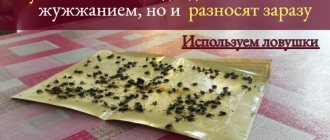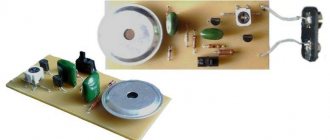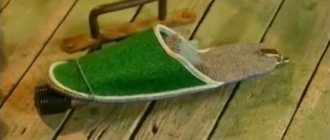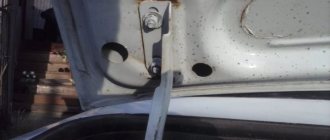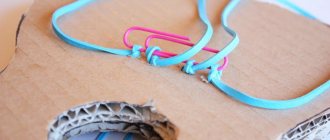Mosquitoes cause a lot of trouble. Especially if they are active most of the year, as, for example, in southern latitudes. At the same time, they cause not only discomfort. Bloodsuckers pose a real danger to human health, carrying dangerous diseases. Therefore, you need to protect yourself from them.
There are several options for how to deal with uninvited guests at home, on the property, or when going outdoors.
Among these are: Rating: 10 best mosquito repellents
Rating: 10 best mosquito repellents
Even the best spray against mosquitoes and ticks in nature does not always protect against other blood-sucking insects...
netkomaram.ru
Open ›
- Use of special repellent preparations. They have an unpleasant odor that repels mosquitoes.
- Use of fumigators. There are devices for the home, for example, special electric heaters. So are spirals, portable devices for use in nature.
- Use of repellers and traps. It is expensive, although quite reliable.
Traps that are sold in stores have many modifications. Manufacturers guarantee effectiveness if the operating rules are followed. And indeed it is. But the cost of the device can be several tens of thousands of rubles. It's not cheap and not available to everyone.
There is another option - a homemade trap made with your own hands. Below we will present several options for traps that you can make yourself without much expense or experience.
Method 1. Bottle trap
A mosquito bait made from a plastic bottle will not cost you anything. Everything you need to prepare it is available in literally every home. The process itself takes about 10 minutes. But the effectiveness of such a trap has been experimentally proven more than once!
You will need:
- Plastic bottle 1.5 l – 1 pc.;
- Sugar – 50 grams;
- Yeast – 5 grams;
- Cardboard or dark fabric;
- Scotch tape or stapler;
- Water – 200 ml;
- Scissors or stationery knife.
The process of making a mosquito trap is very simple, the main thing is to have the necessary parts and a little skill
Manufacturing process:
- Carefully cut off the neck of the bottle.
- Pour sugar into the lower container and add dry baker's yeast.
- Add water and mix well - the mass should foam. The temperature of the liquid should not exceed 40 degrees, otherwise the yeast will die without even starting to ferment.
- Now insert the neck - you get a funnel.
- Wrap the finished trap in a dark cloth and secure it with tape or a stapler. In the dark, the fermentation process will be much more active.
- Place the trap on a windowsill or on a nightstand near your bed. If possible, hang it indoors using twine. Attracted by a specific aroma, insects will fly into the funnel and immediately drown in it.
This bait works for about a week, then it needs to be changed. To extend the validity period, the dose of yeast and sugar can be increased.
Advice! You cannot keep such a mosquito trap with your own hands in the open rays of the sun, otherwise it will deteriorate and will not have the desired effect. After about two weeks, you can remove the paper and evaluate the result.
For more details, watch the video:
Sugar, yeast and 2 liter plastic bottle
Mosquitoes are attracted to carbon dioxide, which they perceive as the breath of humans and other mammals. They will approach this simple trap believing that they will soon start drinking blood, but instead they will meet their doom! To make this mixture, you will need a cup of hot water, 1/4 cup of sugar, a gram of yeast and an empty two-liter plastic bottle.
- Cut the bottle in half.
- Heat the water, then add the sugar and let the granules dissolve.
- Once the mixture has cooled, pour it into the bottom half of the bottle and add the yeast to start reacting with the carbon dioxide.
- Remove the cap, turn the top of the bottle upside down and insert it into the bottom half of the bottle to create a funnel. Then secure the two parts of the bottle with tape.
- To make your mosquito trap more effective, tape a black sock, cloth, or piece of paper around the outside of the structure.
Set the trap above ground in a shaded area of the yard, away from gathering areas. Mosquitoes will be attracted to the CO2, which will encourage them to walk through the funnel where they will drown in the water. Empty the bottle and add formula every 2 weeks or as needed.
Method 2. Trap with vegetable oil
Perhaps this is the simplest homemade trap - an option for those who have absolutely no time, but really want to get rid of mosquitoes.
You will need:
- Plastic bottles - 3-4 pieces;
- Vegetable oil – 4 tbsp. spoons;
- Scissors.
Manufacturing process:
- Cut off the tops of the bottles just below the neck.
- Lubricate large parts inside generously with sunflower oil.
- Place baits in places where mosquitoes accumulate or make holes in the sides, thread ropes through them and hang them indoors.
Alternative bait with vegetable oil without yeast
There is also a simplified version of the device described above. Instead of sugar, vegetable oil is used, which, due to its sticky consistency, will not allow uninvited guests to fly out.
To make a trap without yeast you will need a plastic bottle, 200 ml of sunflower oil, and 250 ml of lukewarm water. As an attractant, a means to attract bloodsuckers, you can use kvass, beer or other alcohol. Improvised bait is added to the bottle in an amount of 10-15 ml. Otherwise, the creation technology is approximately the same. When penetrating inside, blood-sucking insects become stuck in the liquid. Due to the difference in consistency and density, the oil remains on the surface of the water and it is with it that mosquitoes come into contact first.
Such a trap can be easily made both for the street and for the home.
Method 3. Electronic trap
Making electronic baits is a rather complex process that requires certain skill and at least minimal knowledge of physics. This detailed step-by-step instruction will help you complete this task without any problems.
You will need:
- Paper packaging for juice or dairy products;
- Wire (thick);
- A piece of gauze;
- Knife;
- Glue;
- A small fan that runs on batteries (portable or from a car will do);
- A small light bulb or mini flashlight.
Manufacturing process:
- Make a body for the future bait. To do this, cut off the top and bottom of the juice bag.
- Using thick wire, secure a small fan inside. The blades should be positioned so that the air stream flows downwards.
- Cut a round piece of gauze (diameter – 50-70 cm).
- Glue it to the bottom edge of the box. It should look like a bag.
- Move to the top and make two holes on the sides.
- Insert wire into them to create a bow like a bucket.
- Attach a light bulb to this handle. The same wire is suitable for fixing.
- All that remains is to make a loop and secure it to the handle. This part will allow you to hang the trap in any suitable place.
- Turn on a light bulb and fan and place the bait near a door or window.
This device works very simply - attracted by the light of the light bulb, mosquitoes fly closer and immediately fall under the influence of the fan. It sucks the insects into a gauze bag, in which they die.
Favorite mosquito trap: fan and metal mesh
The fan trap has many iterations, but the simplest uses a fan with a metal frame, a metal mesh (such as is used on window screens), and magnets strong enough to attach the screen to the fan frame.
- Turn the fan so that the side that draws air is facing forward.
- Cut a piece of screen the same size as the fan. If you don't have metal mesh on hand, mosquito netting or tulle will do.
- Press the screen to the face of the fan and secure with magnets, zip ties, or duct tape. The mesh or fabric can be attached using glue.
Place a fan near areas where mosquitoes live and turn it on. Mosquitoes will investigate the source of the sound and end up in a trap - in the net.
They will eventually dry out and die, but if you spot any survivors, lightly spray the mesh with a 50-50 mixture of 70 percent isopropyl alcohol and water to finish them off. Just be careful not to get the fan motor wet.
Follow us on Pinterest for more interesting articles.
Useful short videos from Make-Self.net
Method 4. Glue trap
Duct tape is an excellent insect killer available for homemade use. A safe trap impregnated with a certain composition will quickly attract mosquitoes.
You will need:
- Cardboard sleeve - a roll of toilet paper or paper napkins will do;
- Thick paper - thin paper will soften quickly;
- Threads;
- Adhesive mixture.
Hang sticky mosquito traps around the house - most pests will take the bait
Manufacturing process:
1. Take the largest sheet of paper possible (you can use wallpaper) and cut a not too wide ribbon from it.
2. Wrap it around a cardboard sleeve.
3. Prepare the adhesive mixture. The following ingredients are suitable for this:
- Rosin (200 grams), castor oil (100 ml), sweet syrup (50 ml), turpentine (50 grams);
- Pine resin (300 grams), wax (10 grams), honey (50 grams), flax oil (150 ml);
- Glycerin (40 ml), rosin (400 grams), honey (100 grams), Vaseline (200 grams).
4. Mix any of these compositions well and heat over steam.
5. Unscrew a small piece of paper from the sleeve and coat it with the sticky mixture.
6. Hang the trap in the place where mosquitoes appear most often. Once the sticky area is filled with insects, tear it off and apply a new one.
This bait will help cope not only with mosquitoes, but also with flies.
Important! If you decide to make such a trap yourself, be very careful and try not to get dirty. The sticky mixture is difficult to wash off hands and leaves stains on clothes. Another disadvantage of Velcro is its fragility - unfortunately, natural ingredients do not last as long as chemical ones.
There is another option for making sticky traps. To do this, a sheet of paper cut into strips must be lubricated with any of these products:
- rosin;
- jam;
- sugar;
- turpentine
- castor oil.
You can also prepare a mixture of alcohol, milk, sugar, water, potassium dichromate and black pepper. It acts on mosquitoes no worse than an insecticide.
Several of these traps are hung with clothespins from a clothesline.
Electrical devices
People with basic knowledge of a home electrician can make a more complex mosquito trap with their own hands. The classic version is a device based on an ultraviolet lamp and a current source. They work on the principle of most professional electrical traps, but the cost, of course, is incomparable.
In general terms the scheme will be like this. You need to take a small ultraviolet lamp. Place it in a special mesh wire frame. Light will act as a factor that will attract the attention of bloodsuckers.
The frame can be soldered independently from thin rods. It should be tight to let in as few insects as possible. An electric current is supplied to the mesh, which will produce a fatal shock when a mosquito touches the open frame.
The device is suitable for use at home, but there are several nuances. To make it you will need at least basic knowledge in electrical and engineering. In addition, an open current source, an energized grid, poses a real danger to the health and even life of the user. To reduce the level of danger, you can cover the bait with an outer, dense layer of synthetic mesh, which will prevent accidental contact with the unit, but will not prevent insects from entering inside.
Also, the cost of an ultraviolet lamp can be a deterrent to making an electric mosquito trap yourself.
